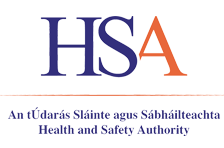Work Equipment in Health and Social Care

Work equipment is defined as any machinery, appliance, apparatus, tool or installation for use at work. The scope of work equipment is therefore extremely wide.
Work equipment is found and used across all health and social care settings. Every year, there are a number of accidents from using work equipment. Many are serious and some are fatal.
The Law
The Safety Health and Welfare at Work (General Application) Regulations, 2007 (as amended) sets out the requirements with regard to work equipment. It is not possible to list all work equipment that may be present in the health and social care setting but it includes items such as beds, trolleys, cookers, water boilers, patient handling aids (including hoists and accessories), medical appliances, etc.
Compliant Equipment
Intermediate suppliers – for example distributors, agents and retailers – must supply safe and compliant products, with the correct documentation. Many new products come within the scope of one or more EU supply Directives and therefore should usually:
- be CE marked,
- come with a Declaration of Conformity, and
- be supplied with user instructions, written in English.
Top Tips
The following are some general points which should be observed to ensure that work equipment is safe and does not present a risk to those who come in contact with it. For certain types of work equipment there will be more specific requirements and you should look at the manufacturers instructions or consult a competent engineer or equivalent person.
- Maintain equipment in a good state of repair and proper working order to avoid presenting a risk of injury to staff or others.
- Use equipment only for the operations and under the conditions for which it is appropriate.
- Ensure the compatibility of items of equipment which are used together for example, patient slings and hoists, beds and bedrails.
- Develop a planned preventative maintenance programme to ensure equipment is kept in good repair.
- Identify items of equipment which must be tested or examined at predetermined intervals and make arrangements for these services e.g. patient hoists and slings - thorough examination at least once in every 6 month period by a competent person; passenger lifts- thorough examination at least once in every 6 month period by a competent person); work vehicles to be maintained as per manufacturer’s instructions (see Regulation 30 of the Guide to the Use of Work Equipment).
- Ensure workers who carry out repairs, modifications, maintenance and servicing are competent.
- Keep records of maintenance checks, examinations, testing and servicing.
- Advise staff to check all items of equipment before use (i.e. a simple visual check) and only to use equipment that is safe. Where equipment is unsafe it must be taken out of service and sent for repair or replaced as required.
- CE marking is applicable to many products placed on the market, ensure that items purchased are CE marked where applicable. Note that CE marking is not a guarantee of quality but an indication by the manufacturer that the product complies with relevant EU Directives.
- Obtain the instructions/user manual and ensure employees have access to it where necessary for their work.
- Power cables can become damaged if not properly routed or equipment is moved while plugged in, as may be the case with electrically operated beds, hoists etc. Measures must be taken to reduce the likelihood and consequences of damage to cables in line with manufacturer's instructions.
- Make employees aware of any health and safety risks associated with work equipment. Provide information, instructions and training to staff where required for the safe operation of equipment.
- Where guards or other protection devices are required to ensure the safe operation of equipment they must be in place before use.
- Where necessary, post warning notices and safe operating procedures alongside machines to remind operators and others of the dangers they impose and safe work practices. Many machine suppliers provide suitable notices.
- Where equipment is classed as a medical device give due regard to the Medical Devices Regulations (visit the Health Products Regulatory Authority for further information on medical devices).


